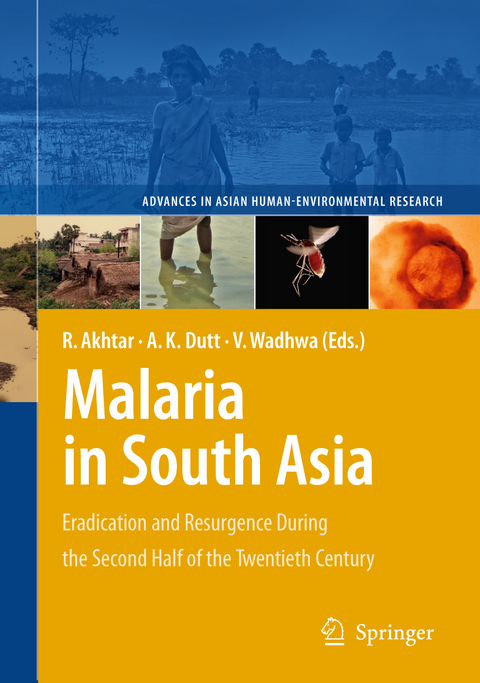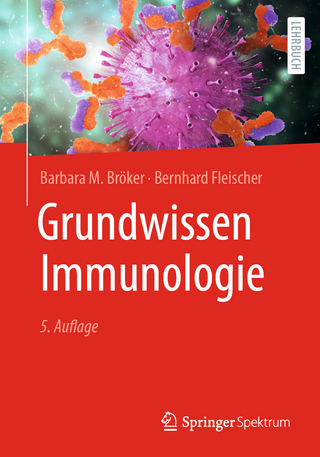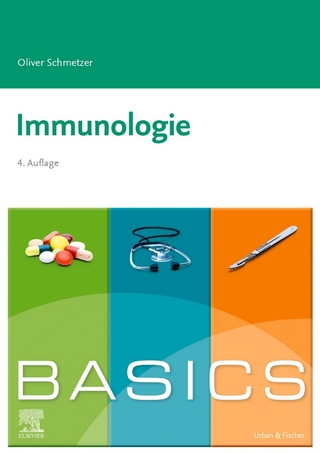
Malaria in South Asia
Springer (Verlag)
978-94-007-3124-0 (ISBN)
Malaria is one of the most widespread and devastating infectious diseases in the world. More than half the world population residing in over 100 countries is at risk of infection from this vector-borne disease. An estimated 250–500 million mal- ial cases occur each year, resulting in nearly one million deaths, the overwhelming majority of which are children. Because of the magnitude of the associated fata- ties, development experts consider malaria a ‘silent tsunami,’ comparing its death toll to the Indian Ocean tsunami (IOT) that ravaged several countries of South and Southeast Asia on December 26, 2004. That tsunami killed some 300,000 people (including children) at once. Globally, malarial deaths account for about 9% of all childhood deaths each year. However, with malaria more than most fatal d- eases, mortality is a small fraction of morbidity. Malaria is a debilitating disease, particularly for the adult population. In addition to children, pregnant women and migrating populations are most v- nerable to malaria. Miscarriage, stillbirth, and low birth weight are common among pregnant women who are infected with this disease. Malaria manifests itself through recurrent fever and chills, with associated symptoms such as anemia and an enlarged spleen. If a person survives the disease, he or she will develop a certain degree of immunity for some years. But malaria victims are not only deprived of energy, they also face an increased risk of other diseases taking hold in the weakened body.
Rais Akhtar is CSIR Emeritus Scientist at the Centre for the Study of Regional Development, Jawaharlal Nehru University, New Delhi. He has published more then 12 books and numerous articles on medical geography. He is the recipient of multiple international fellowships, and was nominated to the UN Intergovernmental Panel on Climate Change, which co-won the Nobel Peace Prize in 2007 with Al Gore. Dr. Ashok K. Dutt is Professor Emeritus of Geography, Planning, and Urban Studies at The University of Akron. He has published in major journals of the world and has written and edited over 20 books. He has been a Fulbright Scholar and Ford Foundation Fellow, received the R.N. Dubey Foundation award for Lifetime Achievement in Geography, and was honored with the title of Bhugool Bachaspati (Most Learned Geographer) in 2008 at the National Congress of National Association of Indian Geographers. Dr. Vandana Wadhwa is Lecturer at Boston University, Massachusetts. She has published in several major journals and contributed various books chapters and encyclopedia entries. She is the former Chair of the Health & Medical Geography Specialty Group of the Association of American Geographers, Secretary-Treasurer of its Disability Specialty Group, and Director of South Asia Studies within the Asian Geography Specialty Group.
The History and Progression of Malaria: A Global and Regional View.- Resurgence of Malaria in Sri Lanka in the 1970s.- Malaria in Sri Lanka: A Geomedical Analysis1.- Malaria Resurgence in Nepal: An Overview.- Resurgence and Post-resurgence Periods of Malaria in Bangladesh.- Resurgence of Malaria in Bangladesh.- The Resurgence of Malaria in Pakistan: A Geographical Evaluation.- Malaria Resurgence in Urban India: Lessons from Health Planning Strategies1,2.- The Dynamics of Urban Malaria in India: An Update.- Lessons from the Past, View to the Future: Summary and Concluding Remarks.
| Reihe/Serie | Advances in Asian Human-Environmental Research ; 1 |
|---|---|
| Zusatzinfo | 34 Illustrations, color; 60 Illustrations, black and white; XXXV, 241 p. 94 illus., 34 illus. in color. |
| Verlagsort | Dordrecht |
| Sprache | englisch |
| Maße | 155 x 235 mm |
| Themenwelt | Medizin / Pharmazie ► Medizinische Fachgebiete ► Arbeits- / Sozial- / Umweltmedizin |
| Studium ► Querschnittsbereiche ► Infektiologie / Immunologie | |
| Studium ► Querschnittsbereiche ► Klinische Umweltmedizin | |
| Studium ► Querschnittsbereiche ► Prävention / Gesundheitsförderung | |
| Naturwissenschaften ► Geowissenschaften ► Geografie / Kartografie | |
| Sozialwissenschaften ► Soziologie | |
| Technik ► Umwelttechnik / Biotechnologie | |
| Schlagworte | eradicated • Malaria • Resurgence • South Asia • urban ecology |
| ISBN-10 | 94-007-3124-8 / 9400731248 |
| ISBN-13 | 978-94-007-3124-0 / 9789400731240 |
| Zustand | Neuware |
| Haben Sie eine Frage zum Produkt? |
aus dem Bereich


